Last updated on
Explore the transformative power of interior stone accent walls, offering a blend of rustic charm and modern sophistication to any living space.
Stone accent walls are increasingly becoming a popular choice in home decor for their natural, earthy appeal and the unique character they add to any space. These walls can be a focal point in a room, adding depth, texture, and color to the interior design.
Whether you’re considering a stone accent wall for your living room, bedroom, or bathroom, this article will provide you with a plethora of ideas to inspire your next home improvement project. From the selection of the right type of stone to the installation techniques and color combinations, we’ve got you covered.
So, let’s delve into the world of stone accent walls and explore how they can transform your living space.
Natural Stone Fireplace Accent Wall
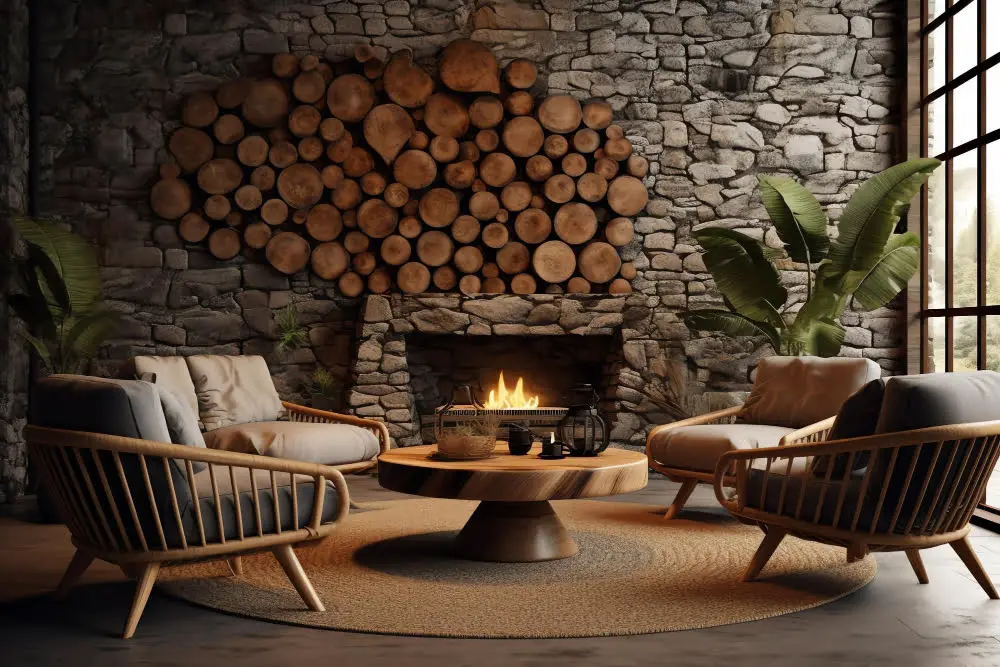
A natural stone fireplace accent wall not only adds warmth to your living space but also acts as a striking focal point. Opt for stones like granite, slate, or fieldstone which offer an assortment of textures and tones.
First, consider the overall aesthetic of your home to guide your choice of stone; rustic, modern, or minimalist styles can each benefit from different types of stone.
Secondly, decide whether a full or partial stone fireplace will best complement your room’s layout. A full stone fireplace typically extends to the ceiling, making a profound impact, while a partial one, often only a few feet high, offers subtlety.
Third, remember to harmonize the color of your stone with the room’s color palette. A mix of warm or cool stones can create a cohesive look.
Last, but not least, choosing a high-quality sealant is critical for stone protection, especially if you opt for porous types like limestone or sandstone. A sealant will guard against smoke damage and maintain the stone’s natural beauty over time.
Overall, transforming your fireplace into a natural stone accent wall can enhance the look of your space, while adding a level of sophistication and comfort. Remember these key points as you plan your renovation to help transform your living room into a homely retreat.
Slate Stone Kitchen Backsplash
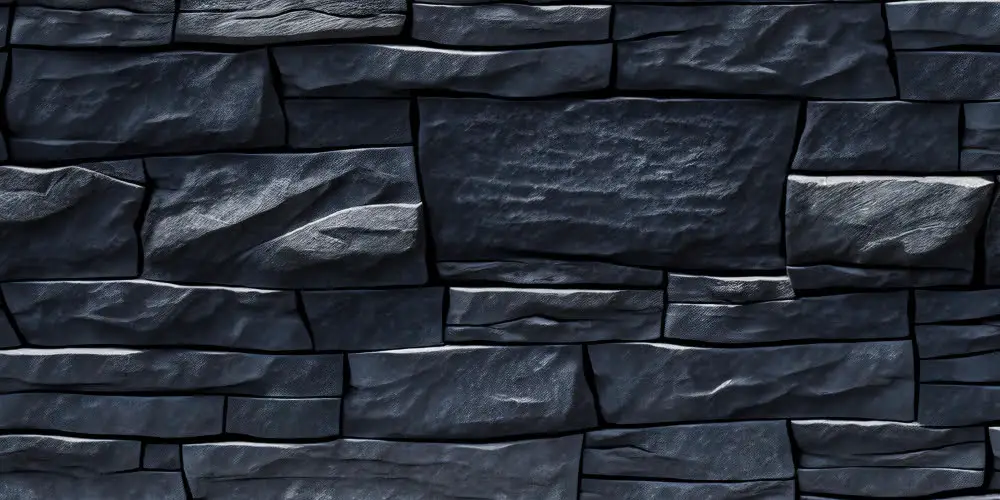
Choosing the right slate stone for your kitchen backsplash can make all the difference. Slate, a fine-grained and durable rock, brings a unique texture and color spectrum that can significantly enhance your kitchen’s overall appeal. It’s available in various earthy shades, from rustic reds, browns to subtle greys and blacks, enabling you to match your kitchen’s existing style and color scheme effortlessly.
1. Decide on the Color and Texture: If you want a dark, dramatic backdrop, go for deep grey or black slate. For a softer, homely feel, choose slate with hues of brown, beige, or green.
2. Texture plays an integral part in influencing the final look. Rustic slate texture gives a rugged appeal, while smooth, polished slate brings an elegant touch.
3. Pick the Right Size and Shape: From tiny square mosaics to large rectangles, your choice depends on the kitchen’s size and the level of visual interest you want. For instance, small mosaics work well for tight spaces, while large rectangular tiles make a bold statement.
Sealing the slate is an important step because it prevents stains and soil buildup, making cleaning easier. Use a penetrating sealer designed for slate, and apply typically every one to three years, or according to the manufacturer’s recommendation.
The installation process requires careful planning and precision. It might be done as a DIY project for those with experience, but it’s generally recommended that you hire a professional for best results.
Cleaning your slate backsplash regularly will ensure its aesthetics are preserved for a long time. Mild soap and warm water can be used for general cleaning, while a specific slate cleaner is best for tackling stubborn stains.
Remember to consider the rest of your kitchen decor, including cabinets, countertops, and appliances, when selecting your slate. The accent wall should complement these areas and not clash with them.
With careful selection and proper maintenance, a slate stone backsplash can serve as a stylish and durable addition to your kitchen.
Rustic Stone Accent Wall in the Bathroom

A rustic stone accent wall can transform a bathroom into a tranquil, spa-like space.
To achieve this effect, start by selecting stones with a rough texture and earthy tones. Consider limestone, flagstone, or river rock for an authentic rustic appeal.
Then, it’s crucial to ensure the room’s layout can accommodate the added stone element. This will essentially involve reevaluating the position of utilities, conducting necessary wall reinforcements, and creating a blueprint for the stone laying process.
Where you place the accent wall will significantly influence the room’s overall aesthetic. The wall facing the entrance or the one housing the bathtub are popular choices for max impact.
Next, the stones must be appropriately prepared and installed. This could involve cleaning, cutting to size, and securing them with appropriate adhesive and using grout for a finished look.
The rustic stone wall doesn’t have to cover the entire bathroom. For instance, it can start at the floor and reach midway up the wall or extend up to the ceiling.
Lastly, remember to balance the ruggedness of the stone with softer elements. Think plush towels, a round mirror, and smooth, wooden countertops.
The result will be a bathroom where the natural beauty of stone creates a warm, inviting atmosphere.
Natural Stone Exterior for a Cozy Study
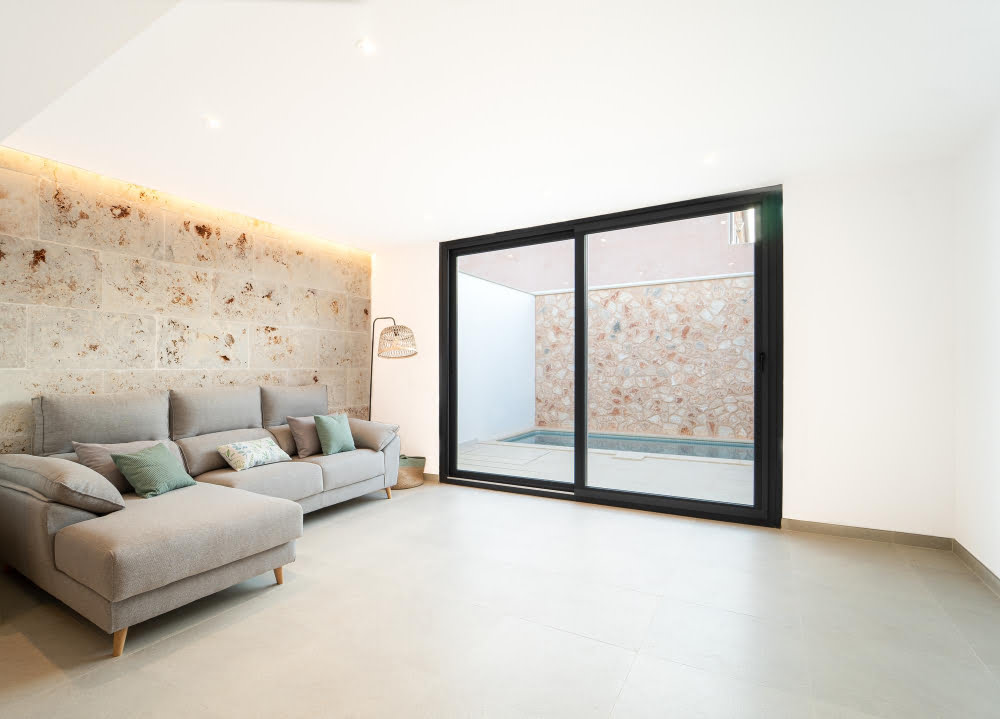
A choice of a lighter shade of natural stone can introduce a calming and soothing effect, essential for a study room atmosphere. Limestone or sandstone, known for its minimalist aesthetic, could be the perfect fit here. Alternatively, darker tones, perhaps granite or polished black basalt, can evoke a sense of focus and concentration.
To install, engage a professional who has experience working with the chosen stone type. They should start by preparing the wall surface, ensuring it is clean and level before applying mortar. It’s necessary to correctly cut stones to fit the dimension of the wall.
For a personal touch, consider arranging stones in unique patterns or interesting geometric designs. Shelves or cabinets can be integrated into the wall construction to house books or display items. A simple feature such as this can add a beautiful visual and practical functionality while maintaining the integrity of the stone accent.
Finally, remember to properly seal the stone walls. This prevents potential staining and maintains the wall’s appearance for a longer time. From the choice of the stone type to sealing, each step marked is crucial to derive the maximum benefits and aesthetic appeal from your new stone exterior study room.
Layered Slate for a Textured Living Room Wall
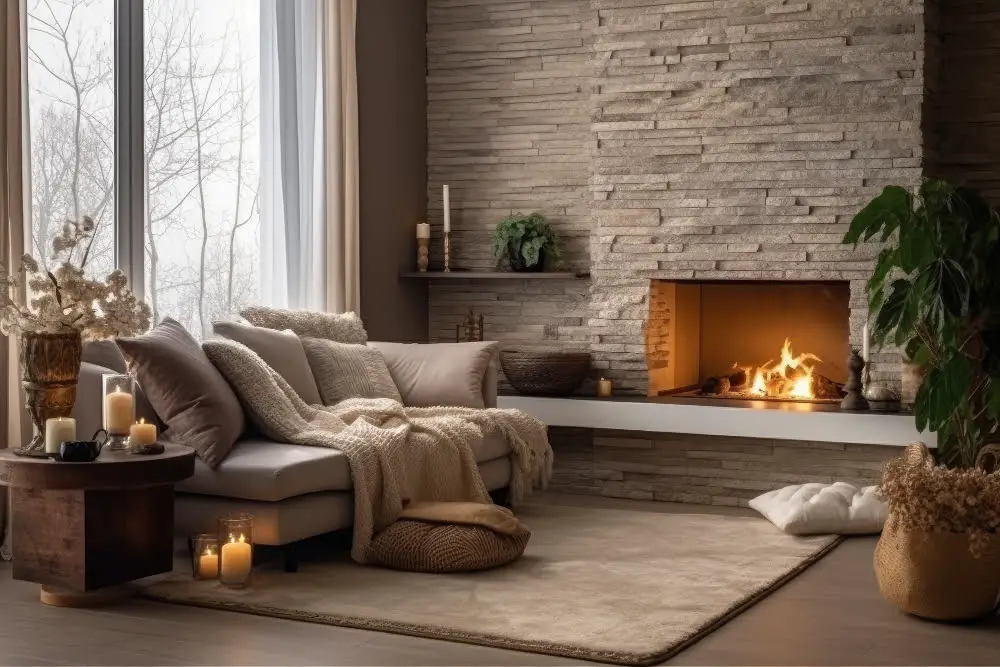
Starting with a well-prepared surface, layered slate provides a myriad of grays, blues, and earthy tones that bring not only texture but also a serenity to your living room. Installing it requires careful planning and execution but the result is compelling and robust.
Prior to installation, ensure you choose a slate that complements the color scheme of the room. It’s recommended to choose a mixture of slate sizes for a more authentic look.
Use a thin-set mortar to adhere the slate to the wall. Apply it evenly, ensuring full coverage. Begin to place your slate pieces on the wall, starting from the bottom up.
Experiment with placement. Lay pieces out on the floor before moving them to the wall. This way, you can ensure there’s a good mix of textures and colors scattered across the surface.
When the installation is complete, seal the slate. This will protect it from stains and bring out the depth of color in the stone.
Although it requires effort, a layered slate wall will undoubtedly offer a touch of luxury and sophistication to your living room, becoming an impressive focal point for all who visit.
Polished Marble Wall in the Dining Area
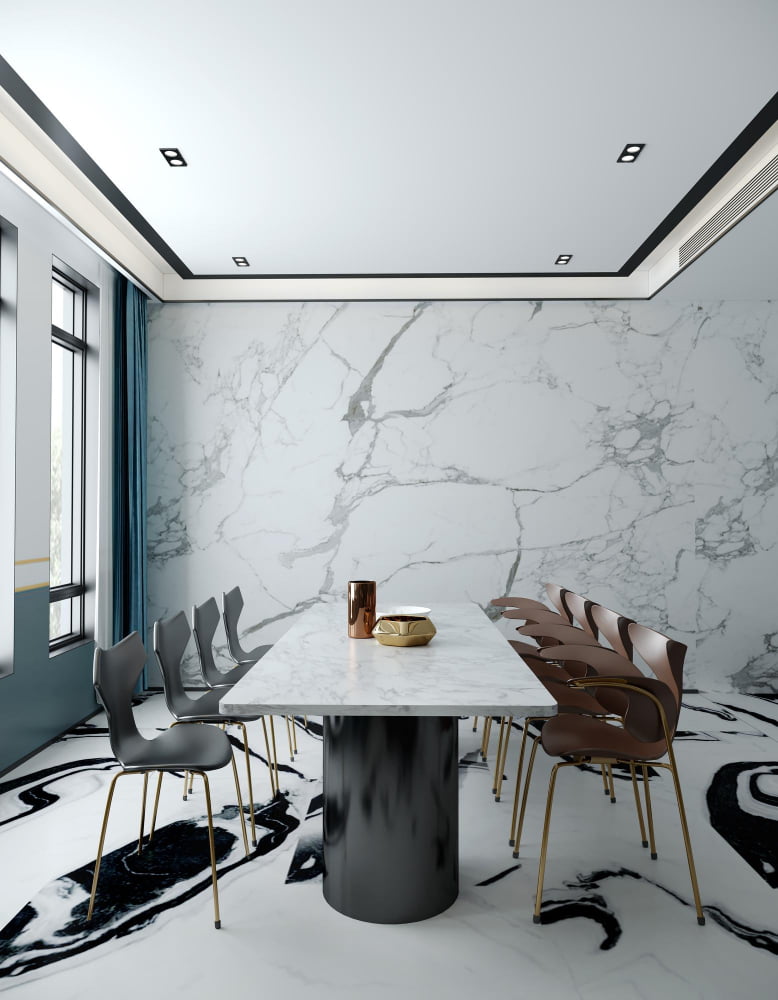
This stunning option offers an excellent way to elevate the aesthetic appeal of the dining area. Polished marble, with its inherent elegance and charm, imparts a timeless quality that enhances any design theme you may have.
Selecting marble varieties with striking veining can create an eye-catching focal point. Coordinate with the existing elements in your space, such as your choice of furniture, lighting, and other decorative accents. Together, these can create a cohesive, harmonious look.
The polished surface of a marble wall is not only visually pleasing but also easy to clean and maintain. It is resistant to heat and moisture, and with regular sealing, it will withstand years of heavy-duty use.
Consider employing a skilled professional for the installation, as they can ensure the correct adherence of the stone to the wall and grouting between the stones. This can prevent future problems with stability and longevity.
Installation steps generally include: prepping the wall, applying the adhesive, laying the stones, applying the grout, and finally, sealing the marble.
In terms of lighting, soft, warm lights bring out the best in marble, highlighting its sheen and enhancing the natural patterns. You might also consider pairing a marble wall with a complementary color scheme in your dining room; cooler tones tend to work well.
Remember, though grandeur is innate to marble, balance is key. Too much of it can overwhelm the space. If you want just a hint of opulence, consider a marble accent wall behind a buffet or a dining hutch.
With a polished marble wall, your dining area will not just be a place to eat, but a space that exudes elegance and sophistication at every meal.
Limestone Wall in the Hallway
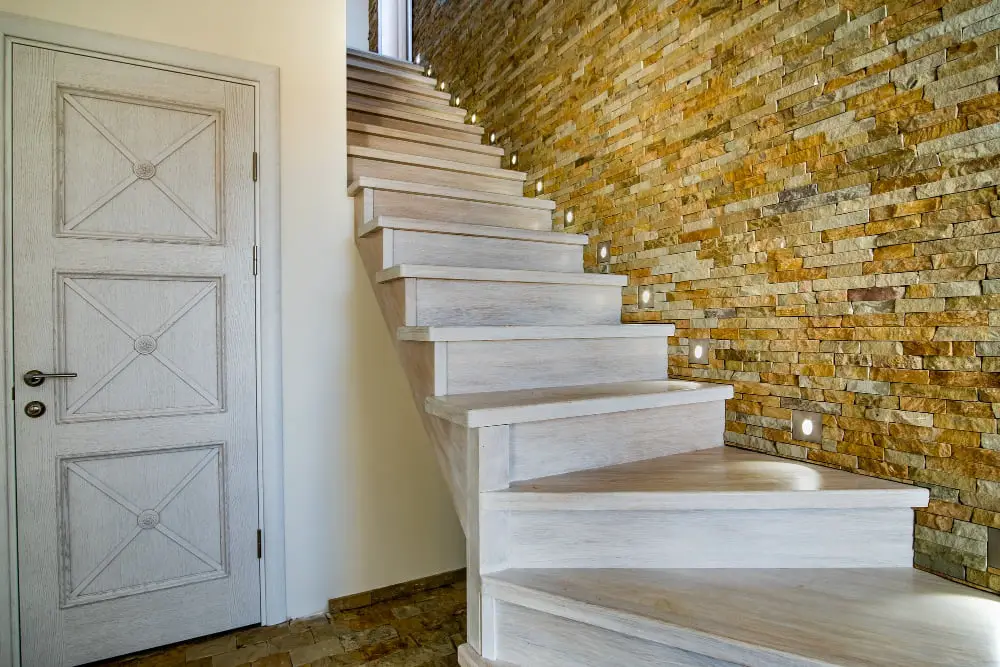
Limestone, bestowed with a warm, natural look, proves an exquisite choice for hallway walls. It harmoniously blends with various design styles and color palettes, providing a versatile backdrop for your interior decor.
Firstly, its wide array of colors, ranging from sandy beige to cool greys, makes it a suitable selection for different aesthetic tastes. By choosing the perfect hue, your hallway can either be a calm transition area or a bold statement space.
The texture of limestone is another advantage. The raw, organic feel offers a unique tactile element, differentiating it from the usual smooth surfaces we encounter indoors. This can enhance your hallway’s overall visual appeal and create a sense of coziness.
When it comes to maintenance, limestone is quite cost-effective. With appropriate sealants, and by avoiding harsh acidic cleaning solutions, your limestone wall can remain beautiful for years.
Finally, consider incorporating additional design details into your limestone wall. For instance, you could illuminate the space with wall sconces at regular intervals, highlighting the stone’s texture. Alternatively, decorative art pieces, vintage mirrors, or photo frames can find a lovely home on the limestone wall, amplifying the charm in your hallway.
Stacked Stone Accent Wall in the Bedroom
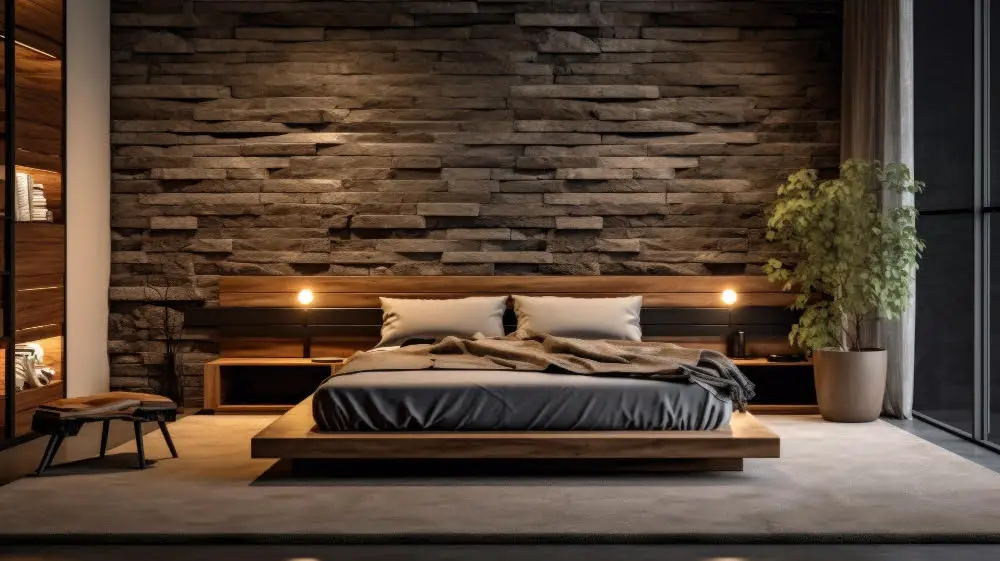
Stacked stone walls can significantly add warmth and a touch of nature to your bedroom, effortlessly creating a space that feels both comfortable and cozy. A variety of stone types and colors offer endless design possibilities, while the texture provides a captivating visual impact.
Choosing the right stone is key – natural flat stones have a rustic appeal, whereas polished stones give a more refined look. Consider the overall style of your bedroom before making your choice.
The installation process covers several steps. Seek professional help if unsure about DIY methods.
- Preparation stages involve taking accurate measures of your wall and purchasing necessary materials, keeping a bit extra for contingency.
- Surface preparation requires a clean, dry, and flat area. Ensure any old wallpaper or loose paint is thoroughly removed.
- Start arranging your stones from the bottom, moving upwards. This way, the weight of the upper stones presses down, providing better stability.
- While installing, make sure to mix stones from different boxes to achieve an evenly distributed color and texture scheme.
- Upon completion, apply a sealant to protect your stone wall from stains and moisture, thereby extending its lifespan.
Remember, while stacked stones make a visually arresting statement, too many can overpower the room. It is advisable to balance with softer elements such as cushy upholstery, colorful rugs, and subtle artworks. Moreover, soft lighting can create an interplay of shadows, further enhancing the 3D effect of the stone wall.
Integrating Bookshelves Into a Stone Wall
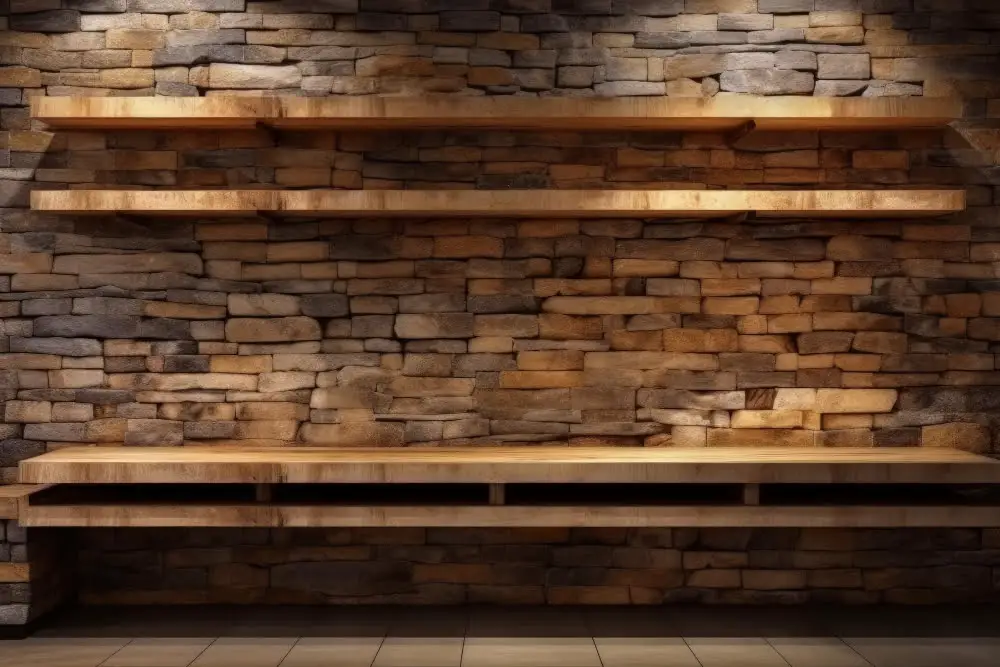
Integrating bookshelves into a stone wall presents the unique opportunity to combine the natural, rugged aesthetics with the functionality of storage. Here are some key ideas to consider:
Bold Contrast: Think dark mahogany or cherry wood for the shelves against a light-colored stone wall. This contrast creates dramatic visual interest while offering ample space for showcasing books or other decor.
Floating Shelves: Employ the use of floating shelves for a clean, modern look. Choosing to use shelves of the same tone as the wall will give an illusion of continuity, making the shelves appear as if they are part of the wall itself.
Embedded Design: For a unique, integrated appearance, consider a design where the bookshelves are inherently part of the wall. This can be done by designing recesses in the stone work where bookshelves can be fitted.
Creative Lighting: Add in-built lighting in your bookshelves. Soft, diffused lighting can highlight the shelves and their contents whilst also showcasing the stone wall beautifully.
Varying Sizes: Opt for different shelf sizes to provide room for a variety of items apart from books like vases, picture frames, or artifacts.
Ultimately, integrating bookshelves into a stone wall is about marrying the versatile functionality of storage with the appealing textures and colors of stone to create a centerpiece that is both attractive and useful.
Geometric Patterned Stone Accent Wall
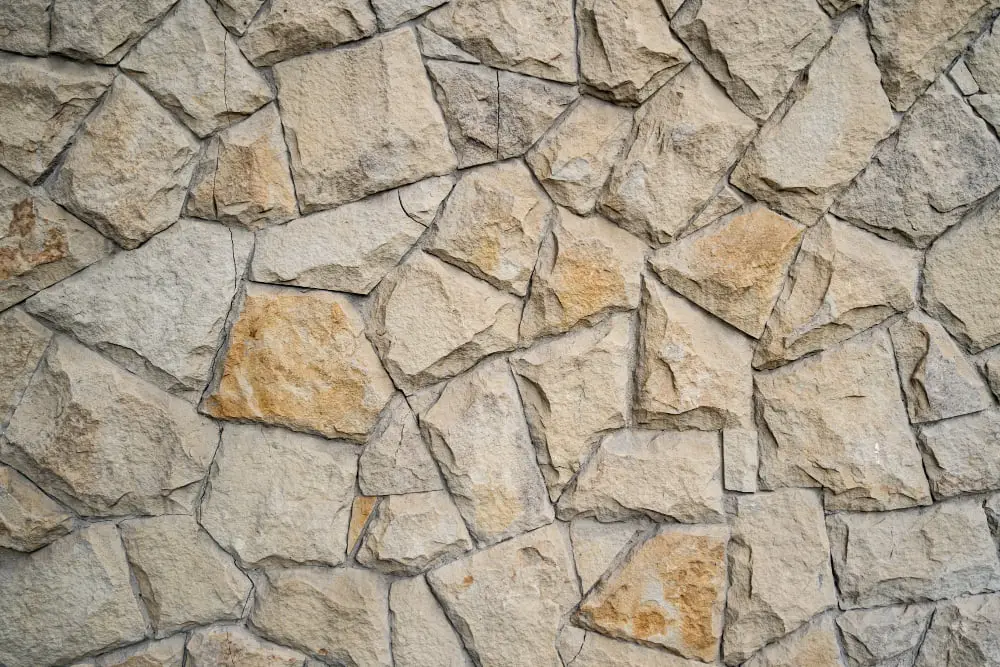
Taking geometry into consideration, one can create a captivating and dynamic stone accent wall. Choose stones of different sizes and shapes- squares, rectangles, or even hexagons. Arrange these into a repeating pattern to create rhythm and continuity, exploring tessellation for a look that’s both disciplined and decorative.
A key concept is using contrasts. Install lighter stones adjacent to darker ones to create an alluring play of light and shadow. This not only accentuates the individual stones but also enhances the collective geometric pattern.
It’s essential to pick the right grout color to either blend with the stones or to give them a stark outline. The grout can be a powerful design element when used intelligently.
Consider varying the depth of the stones, playing with embossed and recessed effects. This not only adds a tactile quality but also gives the wall an intriguing three-dimensional look.
Lastly, periodically punctuate the pattern with larger stones or tiles of different material. This can function as visual anchors, providing visual relief amidst the repeating geometric pattern. Use lighting to subtly highlight these standout pieces, adding depth to your design. For instance, placing light fixtures at the top of the wall so they wash down can emphasize the texture and pattern.
Remember, the key to achieving a chic geometric patterned stone accent wall lies in balancing uniformity and variation in an appealing, aesthetically pleasing manner. It’s all about creating harmony between the meticulously designed pattern and the inherent irregularities and imperfections of the stones. This mix is what makes such designs truly live and breathe.
Quartzite Stone Wall in the Home Office
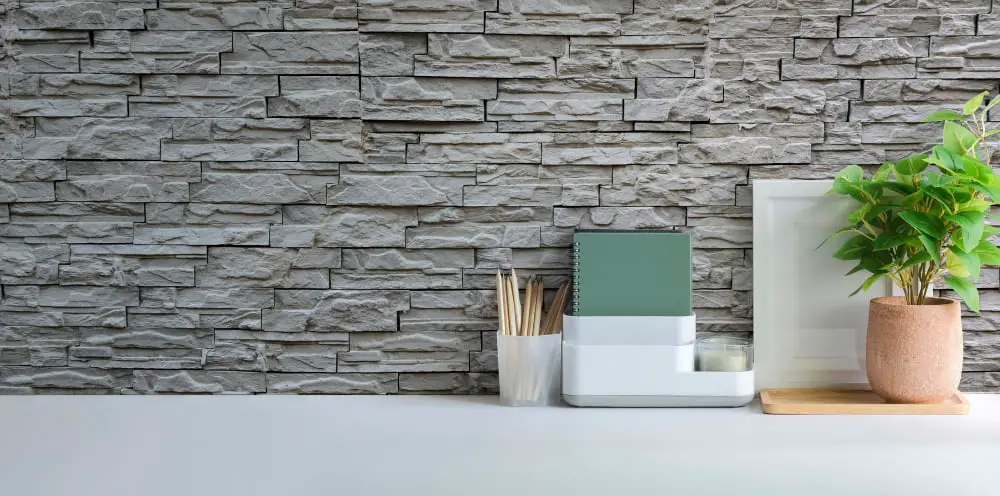
Quartzite, a hard metamorphic rock derived from sandstone, brings an element of natural beauty and sophistication to your home office. Its durability and resistance to heat and scratches make it an excellent choice for areas with high activity.
Using Quartzite stone for an accent wall in the workspace has numerous benefits:
- Design Aesthetics: Quartzite comes in a variety of patterns and colors, from subtle whites and greys to vibrant reds and blues, which helps to create a visually captivating workspace.
- Maintenance: Due to its hard surface, quartzite is easy to clean and relatively stain-resistant, requiring minimal maintenance, which is a significant advantage in a high-use area like a home office.
- Lighting: Its polished surface reflects light beautifully, making the space look brighter and larger.
- Resale Value: Quartzite accent walls are a show stopper that can increase the resale value of your home.
To create a quartzite stone accent wall in your home office:
- Choose the right color scheme that suits your office furniture, ranging from subtle tones to dramatic shades.
- Decide the finish, polished for a shiny look or honed for a matte finish.
- Consider incorporating LED lighting to play up the textures and colors in the quartzite.
- Consult with a professional installer to ensure quality and correct installation.
Remember, while quartzite might be more expensive than other stone types, its durability and minimal maintenance make it a worthwhile investment for your home office.
Stone Wall With Embedded Lighting Fixtures
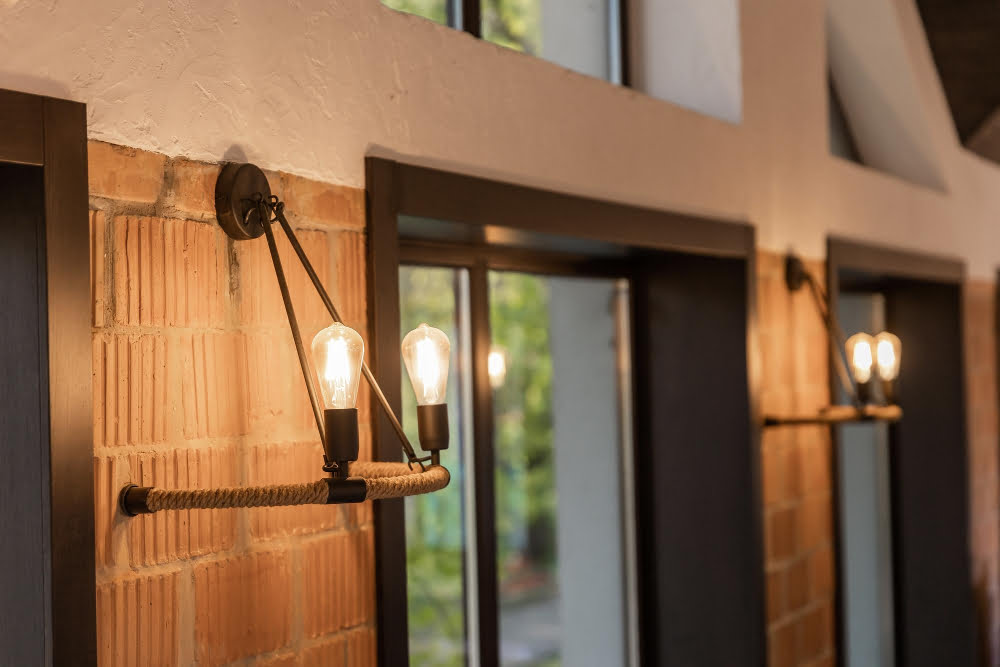
Seamlessly integrating lighting fixtures into a stone accent wall ameliorates the drama, adding more depth and dimension to the overall visual impact. Given the texture and sturdiness that stone walls provide, they naturally lend themselves to this sort of enhancement.
Discreetly tuck in linear or spotlights between the stones for an architecturally inspired look, casting intriguing shadows and showcasing the stone’s texture; a method known as grazed lighting. Alternatively, consider recessed lighting set directly into the wall itself. This diffuses light across the area and commands attention to the structural breadth of the wall.
For a more dramatic approach, strategically place uplights at the foot of the wall to deliver a striking theatrical effect. Conversely, downlights can be employed to generate a softer, more calming ambiance, particularly suitable for bedrooms or living areas.
To add a touch of contemporary sophistication, opt for a backlit stone wall, especially effective when using semi-translucent stones such as white quartz or onyx, creating an array of diffused warm tones.
Keep in mind that the degree of brightness, color, and position of each light source plays a significant role in setting the mood or atmosphere of a room. In addition, the type of stone chosen inevitably determines the final result – light-colored stones will reflect light, making the room feel more spacious and airy, while darker stones will tend to absorb light, adding coziness and intimacy.
Finally, don’t overlook the importance of sourcing a qualified electrician. With their expertise, you’ll be able to avoid potential difficulties and complexities it may present, ensuring that your vision is executed safely and flawlessly.
Sandstone Wall Decor in the Foyer
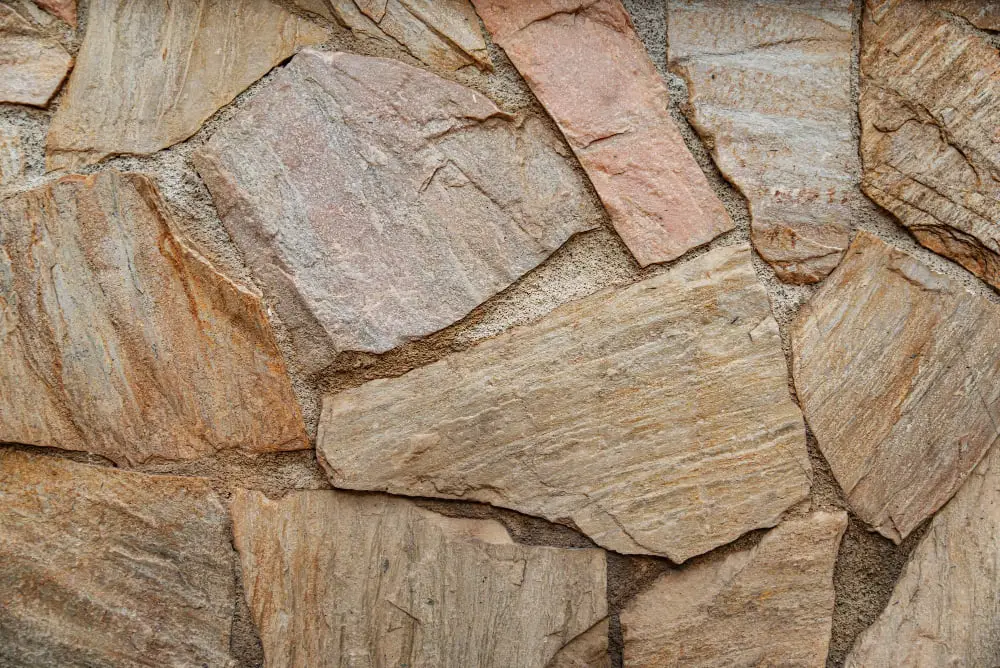
Sandstone, with its warm, earthy hues and natural texture, presents an exciting choice to enhance a foyer’s aesthetics. Below are essential points to consider for leveraging sandstone:
Select the Right Tones: Choose shades that complement your existing color palette. Earthy tones like taupe, cream, or dusty brown can blend seamlessly with various styles.
Texture Variations: Opt for a subtle texture for a modern home while a rugged surface suits a rustic setting. Textures range from smooth, honed sandstone to rough, natural cleft finishes.
Incorporate Lighting: Enhance your sandstone wall’s features using spotlighting or concealed lighting fixtures, casting intriguing shadows and bringing out the stone’s color and texture.
Balance with Furnishings: Use organic material furnishings, such as a wooden console or a jute rug, to create a harmonious flow between the elements.
Add Artworks: Hanging artworks, mirrors, or decorative frames can break up its expanse and add additional personality to your foyer.
Consider Maintenance: Remember that sandstone is porous and might stain, so sealing the stone is pivotal to maintain its pristine appearance.
Faux Stone Veneers for a Cost Effective Option
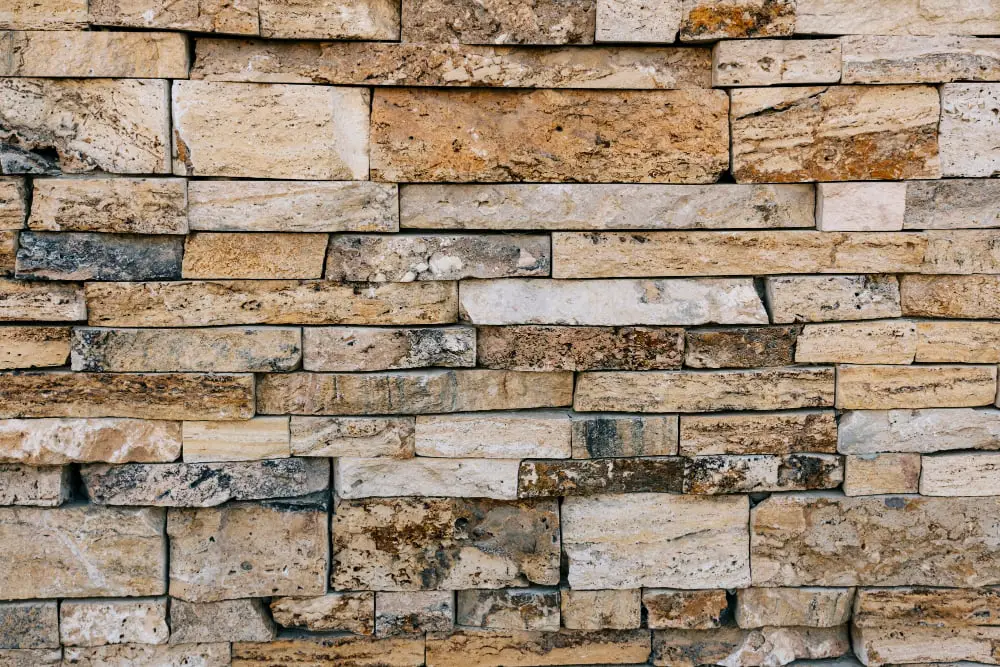
Starting your journey with faux stone veneers can be both a budget-friendly and design-savvy decision. These veneers mimic the appearance of natural stone but are much lighter in weight. They’re easy to install on any wall surface making them a versatile choice for your interior design needs.
Faux stone veneers come in a plethora of designs and shades. From deep, earthy tones for a rustic ambiance, to lighter hues for a fresh, modern look, you’re sure to find a design that complements your decor.
You can enhance any room depending on where you choose to use this feature. Transform a dull living room into a cozy den or turn a mundane bedroom into a sophisticated sanctuary.
The simplicity of this material also makes it easy for DIY installation approaches. Here are some top pointers to keep in mind:
- Start with a clean, flat surface for application.
- Dry-fit your panels first before applying the adhesive.
- Use a level to make sure your panels are straight.
- Cut the panels to size using a circular saw, if necessary.
- Apply mortar or adhesive, then press the panel onto the wall.
Remember, by choosing faux stone veneers, you’re opting for a cost-effective way to add an enduring aesthetic appeal to your home.
River Rock Stone Wall for a Natural Look
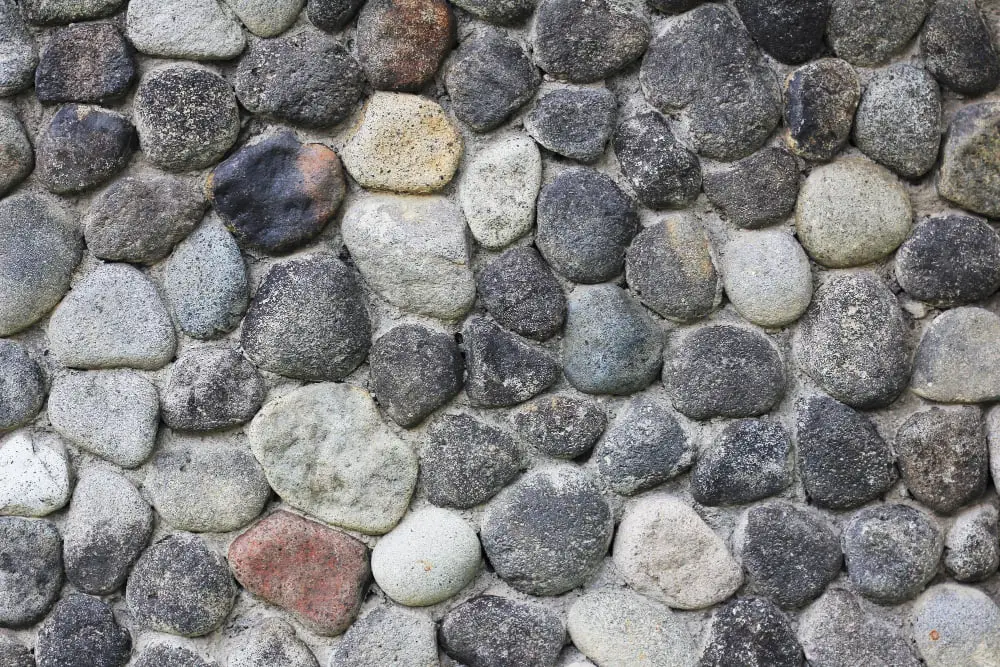
Among the various types of stones used for decor, river rock stands out for its distinct rounded shapes and smooth textures, reminiscent of stones weathered by natural elements. Its charm lies in the versatile array of colors, from muted grays and tans to vibrant reds and blues.
To begin the transformation process, pick a suitable wall space which will benefit from an infusion of natural aesthetics. This could be the living room, kitchen, hallway, or bathroom. Making it a focal point of the room tends to yield the most impactful results.
Start by sketching a design or pattern. You could opt for a uniform appearance or make it more organic and randomly placed, similar to how you would see these rocks in nature.
Measure the wall accurately to determine the amount of river rock needed. Remember, it is better to purchase a little extra to compensate for any breakage or misfits.
Preparation of the wall is crucial. Ensure it’s clean, dry, and free of obstruction. A plywood layer can be added for extra support if needed.
Applying the river rocks can be a bit tricky due to their uneven shape. The trick lies in finding stones that fit well together, almost like a puzzle. Using a sturdy adhesive, start at the bottom and work your way up. Larger and flatter stones work best for the lower part, while smaller ones suit the upper areas.
Grouting is an optional step depending on your aesthetic preference. It can add extra stability but also alters the overall look. After applying the grout, wipe off any excess from the surface of the rocks.
Sealing your river rock wall is highly recommended to prevent staining and to enhance the natural colors of the stones. Always allow adequate drying time between each step.
This type of design celebrates the imperfections and irregularities of each individual stone, inviting a touch of nature into your home.
Granite Effect for a Robust Outdoor Wall
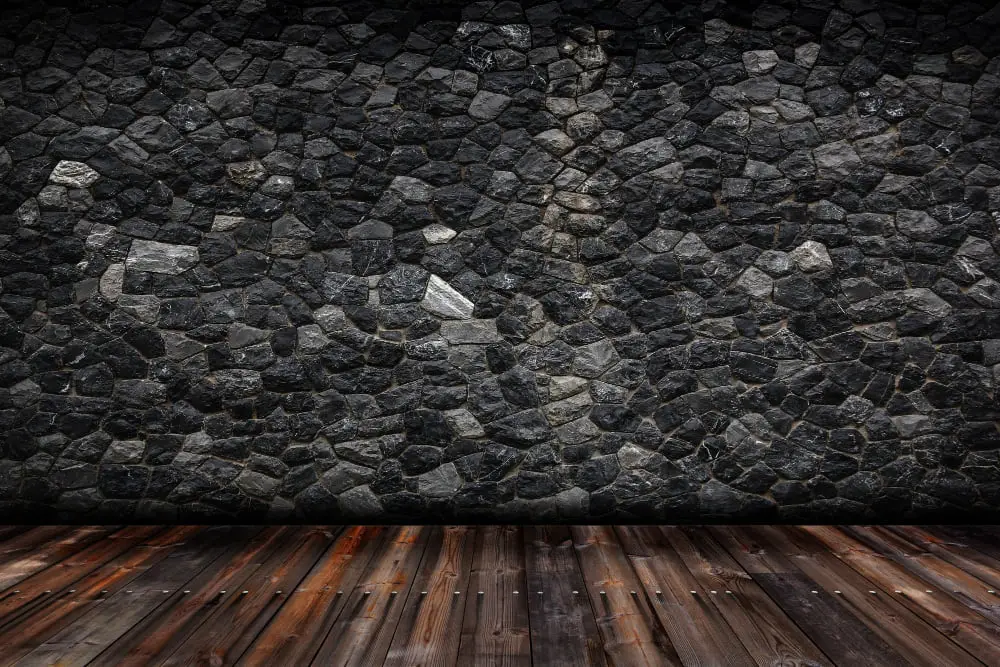
With the inherent strength of granite, your outdoor wall will not only stand the test of time but will also garner attention with an air of sturdiness. This, coupled with granite’s unique grains and colors, provides a dynamic and robust visual appeal.
There are high-quality granite veneers available which accurately mimic the appearance and texture of authentic granite. These are a more cost-effective option and easier to install than real granite blocks.
Consider these ideas when implementing a granite effect for your outdoor walls:
- Choose the right granite veneer: These come in a variety of colors and finishes, from rough and rustic to smooth and polished. This allows you to match the style of your outdoor space.
- Opt for a mixed design: By incorporating blocks of varying sizes, it adds depth and visual intrigue to the wall.
- Integrate lighting: Adding outdoor lights can accentuate the texture and colors of the granite, especially at night.
- Combine with other materials: To break the monolithic appearance, you may pair the granite wall with wooden panels or sliding glass doors.
- Consider professional installation: While granite veneers are more DIY-friendly than real granite, for the best effect, you may want to consider having them professionally installed.
Stone Wall Mural in the Kids’ Room
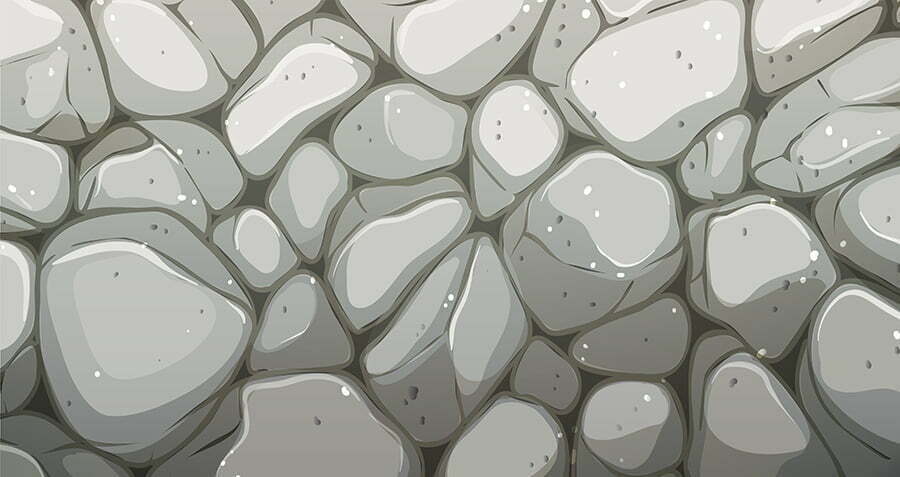
Forging a mesmerizing setup in the children’s room can be achieved effortlessly with a stone wall mural. This feature not only brings a lively splash of nature into the room but also fuels creative imagination in young minds. Stone wall murals come in a variety of designs, vibrant colors, and are quite easy to apply.
First off, measure the wall space to ensure the mural size fits perfectly. This is crucial as it will determine the final look. You might consider enlisting a professional for precise measurements.
Next up is selecting the type of mural that compliments the room. From realistic three-dimensional stone prints to fairytale-like castle stones, there’s a rich palette to choose from.
Installation is often simple, requiring minimal tools. Typically, it involves applying a specific type of adhesive onto the wall before applying the mural. It’s essential to smooth out any bubbles that might form during application.
Furthermore, think about the overall room decor when choosing the design and color of the stone mural. The wall mural should complement the existing colors and themes in the room nicely.
And lastly, remember maintenance. Regular light cleaning will keep the mural looking fresh and vibrant. Most stone wall murals can be easily cleaned with a damp cloth.
In the grand scheme of things, stone wall murals are an exciting and playful way to spice up your kid’s room. What’s more, they create an extraordinary space for your child to play, learn, and grow.
Blending Stone Wall With Wood Accents
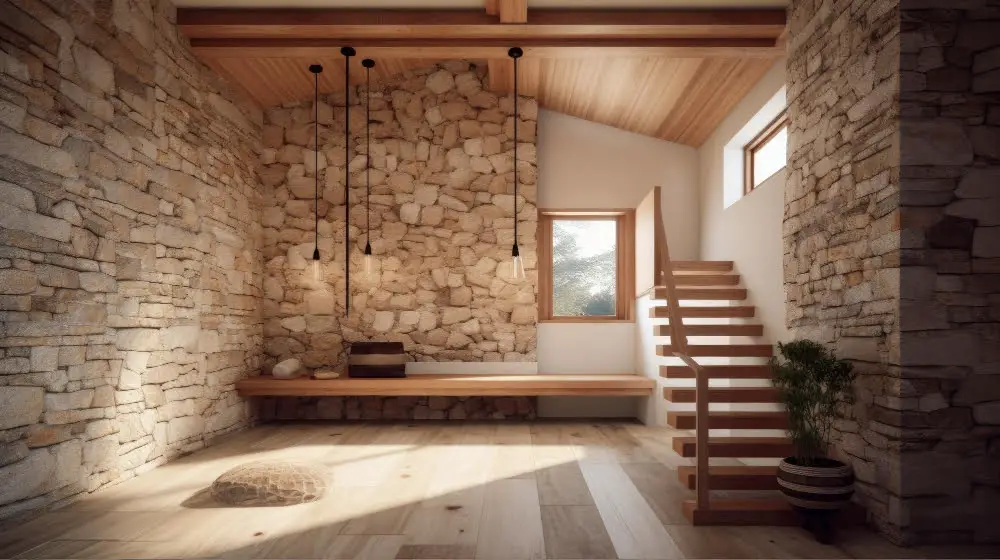
Blending elements is a craft, and when done right, the combination of stone and wood can catapult a room’s aesthetic significantly. The raw, rustic vibe of the stone paired with the warm, homely appeal of wood crafts a winning combo that adds a natural feel to your decor.
Begin with choosing a type of stone that complements the wood’s tone. For instance, lighter shades of stones pair perfectly with dark woods like walnut or mahogany. On the other hand, dark stones blend well with lighter woods such as oak or pine.
Next, consider the placement of both materials. You have the option of integrating wood into your stone wall through a ceiling or floor connection, or you can position wooden furniture or decor pieces strategically to create a balanced look.
Texture is another important aspect. The contrast between a smooth wooden finish and a rough, rugged stone surface creates an interesting dynamic that can give your room an elegant touch.
Do remember that proportion plays a key role. Whether you opt for an oversized wooden door against a towering stone wall or a sleek wooden bookshelf nestled into a cozy stone nook, ensure it does not overpower the other.
Lighting can also enhance the blend, casting a warm hue on the wood and illuminating the stone’s intricate details. So, contemplate the placement of light fixtures to achieve maximum effect.
Lastly, consistency is vital. Regardless of where in your home you implement this blended decor style, stick to a uniform approach to ensure a well-coordinated and harmonious appeal.
Blending stone and wood is not a strict formula; instead, it’s about creating an eclectic, balanced interior that resonates with your personal taste and lifestyle.
Modern Minimalist Style With a Single Stone Wall
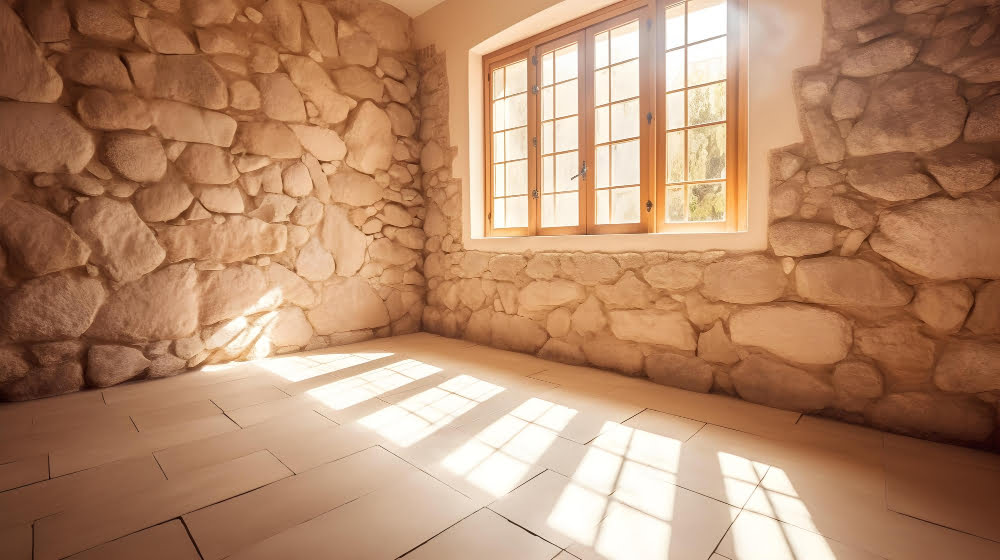
Embracing a modern minimalist style with a stone wall accent can create a striking yet understated aesthetic. Selecting a stone type with a clean, uniform look is crucial. Polished granite or flat cut stone are excellent options, yielding an elegant, minimalist design while maintaining a sophisticated, modern tone.
When designing this feature, consider the wall’s size and choose stones accordingly to keep the lines clean and straightforward. Further, you could opt for a monochromatic color palette, sticking to shades of one color, adding depth while staying minimalist.
You may choose to have the stone wall as a standalone feature or use it as a backdrop for a flat screen TV or artwork. The minimal furniture against the stone wall will undoubtedly enhance the modern feel. Simplicity is key, so limit decorations or wall art; the stone itself will serve as the centerpiece.
Incorporating adequate lighting is an essential step in creating this look. Accent lights can emphasize the texture and color of the stone, while natural light from strategically placed windows or glass paneled doors can create a play of light and shadow.
Lastly, for a sleek, cohesive look, match the stone accent wall’s tone with other elements in the space, such as the floor color or the furniture finish. This approach will ensure a visually balanced space that exudes modern minimalism.
Partial Stone Accent Wall Behind the Bed
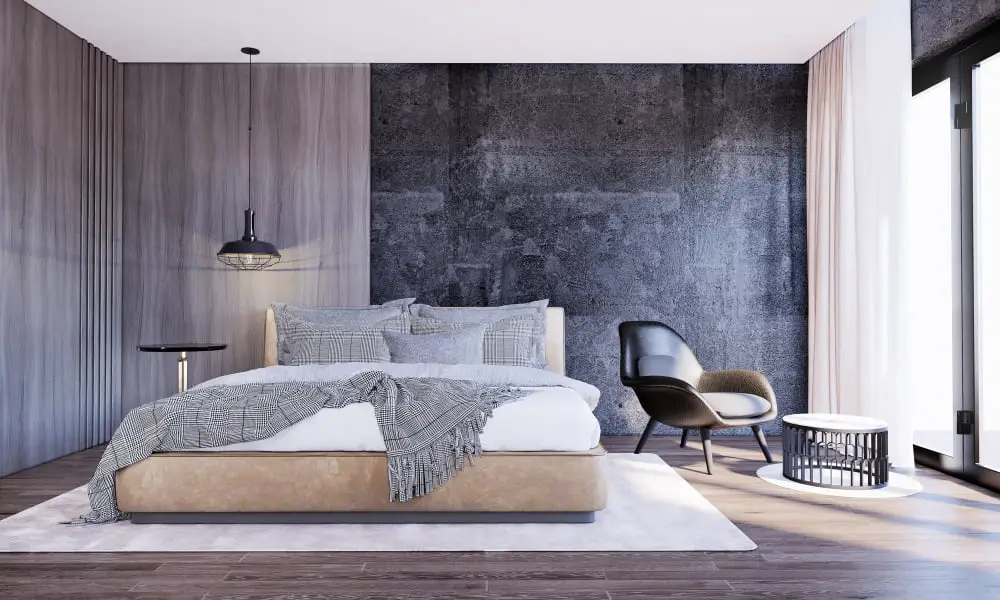
Creating the perfect ambiance in the bedroom often comes down to the details. One such detail is the inclusion of a partial stone accent wall behind the bed.
The first action to undertake is picking the type of stone. Natural stones like limestone or sandstone bring soft colors and a relaxed vibe into the boudoir, while darker stones like slate or granite introduce a depth of color and sophistication, perfect for an urban-style loft.
Next, determining the “partial” of the partial stone wall is critical. This can range from a small inset feature around a piece of wall art, to half of the wall being covered vertically or horizontally, rendering an asymmetrical look.
Choose whether to span the partial stone accent from floor to ceiling, or let it float on the wall with painted drywall above or below it. Both styles offer unique aesthetics, it’s all down to personal preference.
Lastly, consider adding indirect lighting either from the top or sides of the stone wall if a dramatic effect is desired. A well-lit stone accent wall changes the entire mood of the room, illuminating the stone’s texture and creating shadows for added depth.
The design of any room should be a personal expression, and the introduction of a partial stone accent wall in the bedroom can add so much character and individuality to a home.




